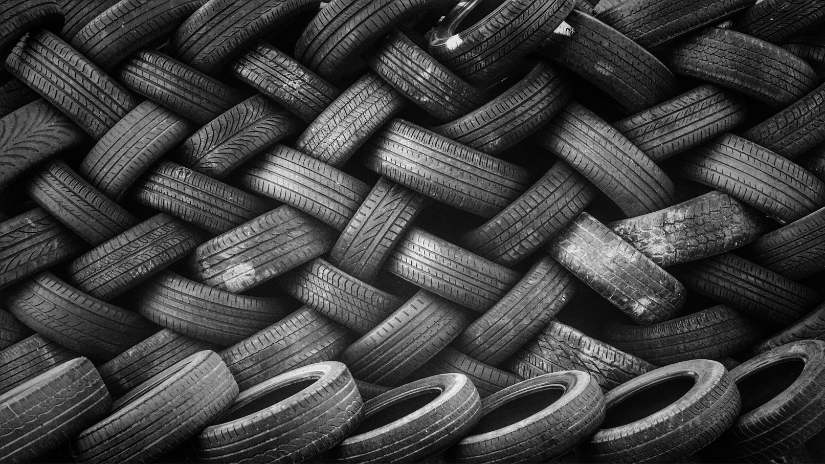
Tyre tread is more than just a pretty pattern – all treads are designed to provide the best grip under different circumstances, and it’s important that you know which type of tread best suits your vehicle, and your driving style.
Advances in tyre technology are incredible, and every year the industry improves tyre quality and tread even further. However, for the average motorist, it seems like the choices are endless, advice random, and pricing all over the place. Aside from different makes, sizes, and purposes, tyre tread plays a key role in safety and efficiency. Choose the wrong type of tread for your driving needs, and you could end up replacing tyres sooner than expected, and even paying more on fuel.
Due to some persistent tyre tread myths, you shouldn’t trust random advice (unless you’re talking to and expert of course). To help you avoid some of the most annoying tyre tread myths, we’ve put together this brief list for some clarity on tyre tread scenario:
All tyres are the same and tread is just a pattern:
While most drivers are aware of different tyre tread patterns, many make the mistake of thinking the type of tread isn’t important when choosing new tyres. Choosing the wrong tread can not only be dangerous, but can have a big impact on your vehicle’s efficiency and performance in the long run. This article gives an excellent description of the different types of tread. Below is a summary:
-
Directional / Unidirectional tread pattern: This type of tread is recommended for high performance vehicles. The elongated grooves are designed to displace water quickly and avoid loss of traction at higher speeds or quick acceleration.
-
Symmetrical tread pattern: Symmetrical tread patterns are the most common type for standard passenger cars. They offer excellent grip and are designed to last long if taken care of correctly.
-
Asymmetrical tread pattern: This one is also popular with sports cars. Usually the inside and middle part of the tread is designed to deflect water and allow for good grip under wet conditions. The outside part of the tyre will normally have a large block pattern for better cornering ability in dry conditions.
-
Directional / Asymmetrical tread pattern: Tyres with this tread pattern are designed to be versatile: they have the ‘daily dependence’ of symmetrical tread tyres, but combined with deep grooves, to quickly displace water if needed.
Tyre pressure doesn’t affect tread:
This myth comes and goes, but it’s always lingering somewhere in the background and it’s based on the misconception that if your tread isn’t worn down, then you don’t have to worry about tyre pressure too much.
As with most myths, almost the exact opposite is true: tyre tread patterns are scientifically designed to distribute grip over the whole tyre surface. Over or under-inflation means that certain segments of the tread pattern can’t properly do their job. For example, if you over-inflate an asymmetrical tread tyre you risk losing functionality of the segments designed for either wet or dry conditions as they won’t be making contact with the road.
Incorrect tyre pressure will always have a negative effect. Not only is it dangerous because you’re compromising road grip, but you will end up wearing down one section of the tread much faster than the rest and end up having to replace your tyres much sooner than necessary.
If the tread is fine, tyre age doesn’t matter:
This is an easy one to be fooled by – if the tread looks good, the tyre should be good. Right? Sadly, that’s not the case. As a rule of thumb, tyres are considered useable for around six years, after that the rubber starts to degrade. If you’re shopping for new tyres and come across a brilliant deal, it’s a good idea to check the age of the tyres. They might be ‘brand new’ in the sense that they’ve never been used, but they could have been sitting out in the sun in someone’s backyard for the past ten years.
An article on CompareGuru gives a simple description on how to check tyre age. According to the article, there is a DOT code stamped on the side of the tyre: “The date of manufacture is stamped into this code. The codes are either three or four digits long. Three-digit codes are manufactured before the year 2000. If a tyre shows 178, for example, it was made in the 17th week of 1988. If there is a small triangle next to it, it will mean it was made in the 90’s. After 2000, the code was switched to a four-number code. So, if you see 3003, it means it was made in the 30th week of 2003”.
In conclusion, before you buy your next expensive set of rubber, make sure you know what type of tread you need – this way you’re walking in armed with a basic idea of what you’re looking for. Thankfully, most reputable tyre outlets will have experts on hand to give you good advice, but it’s always better to have some basic knowledge.
Once you’ve bought your beautifully-patterned tyres, keep in mind that they need to be taken care of in order to function correctly, and to not wear out prematurely.
Make sure your entire fleet is fit for purpose, download our fit for purpose analysis today.
